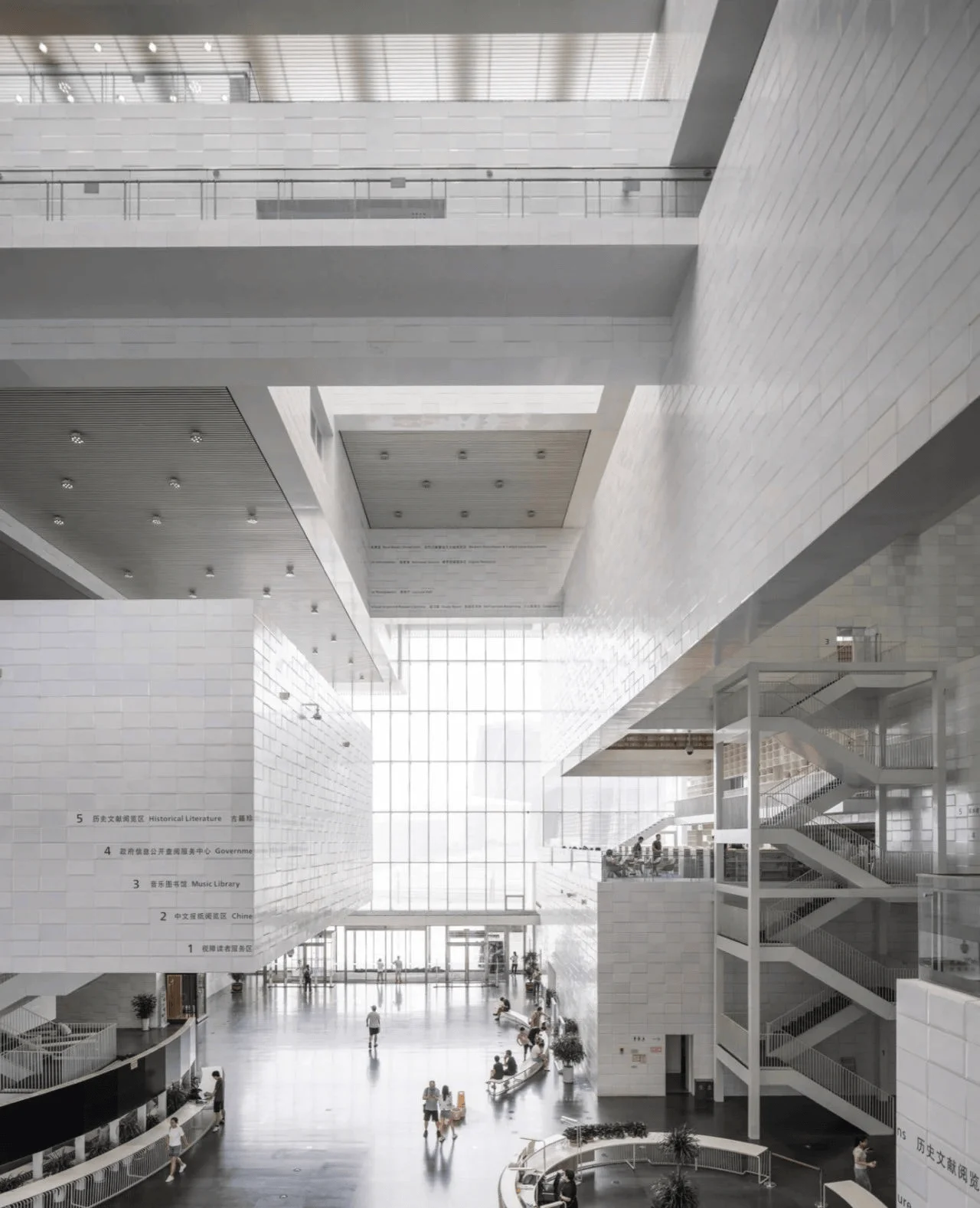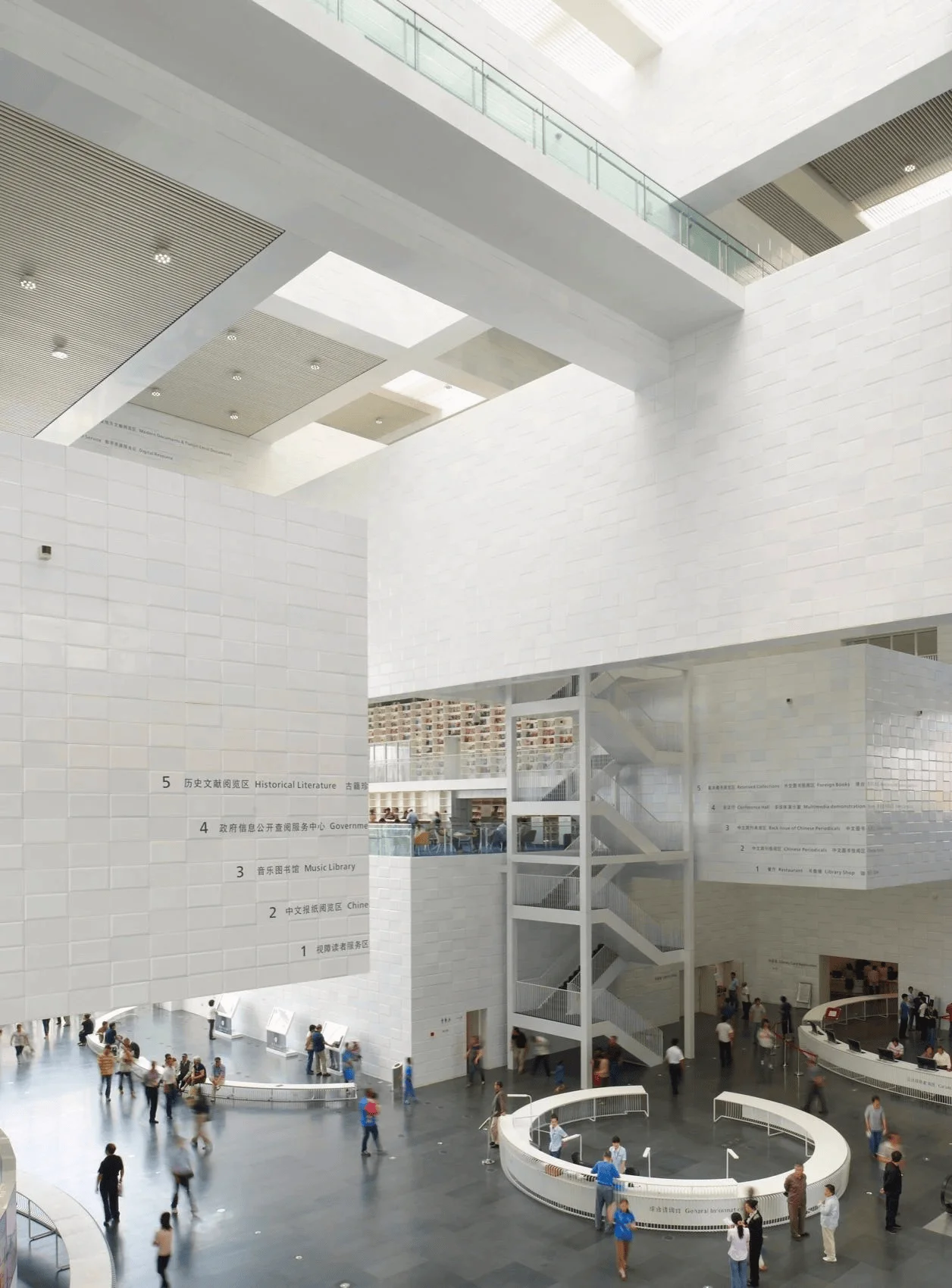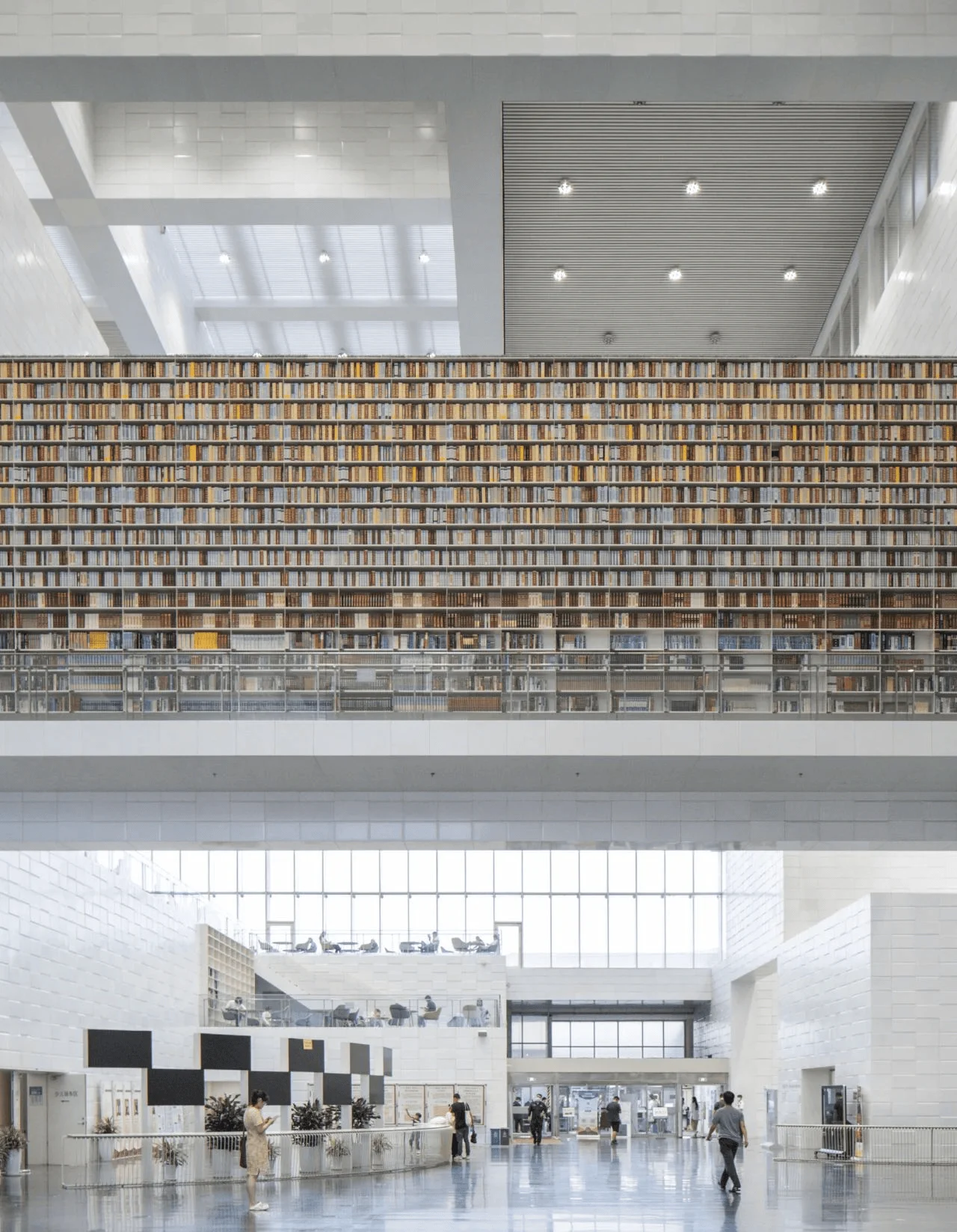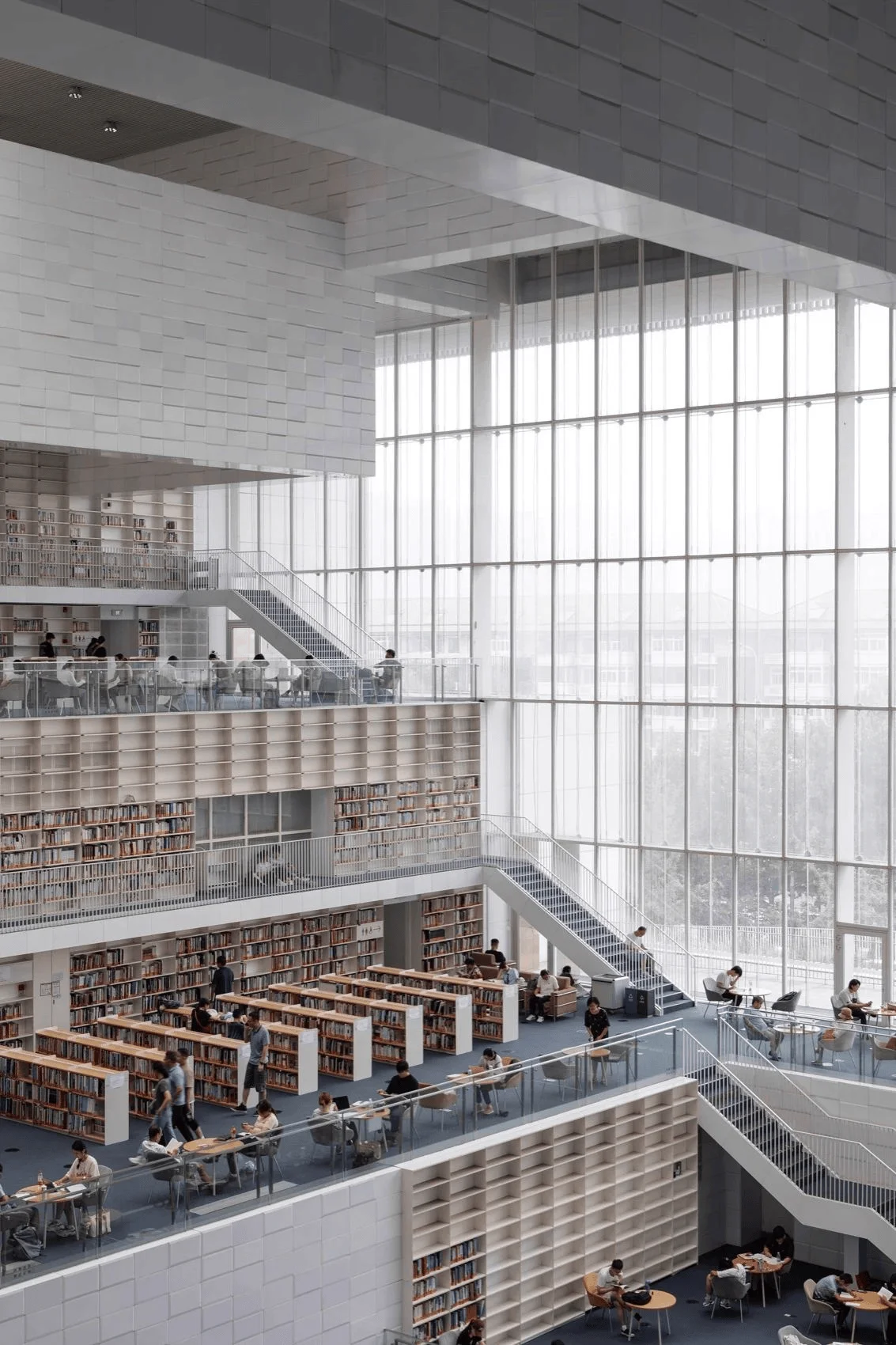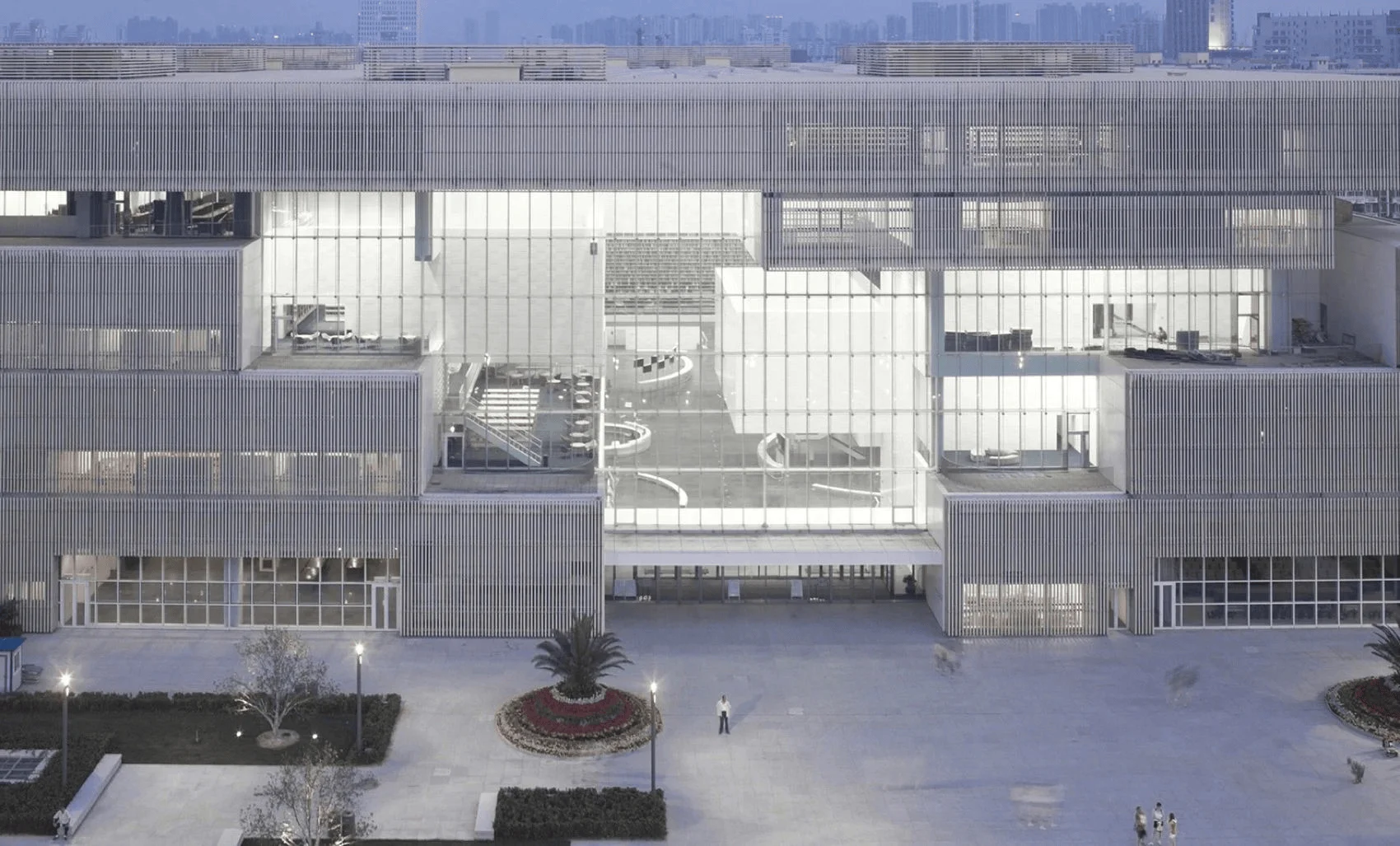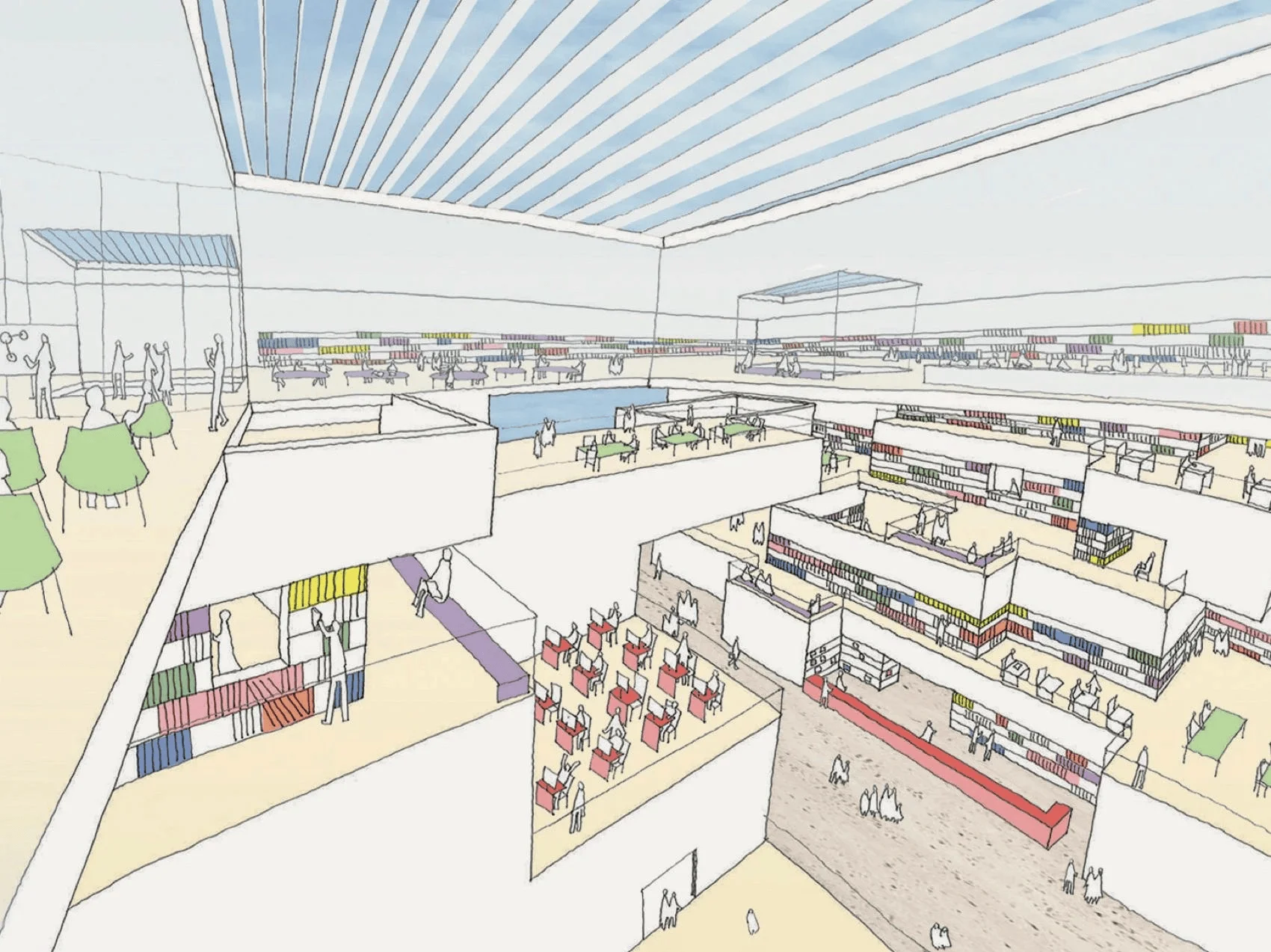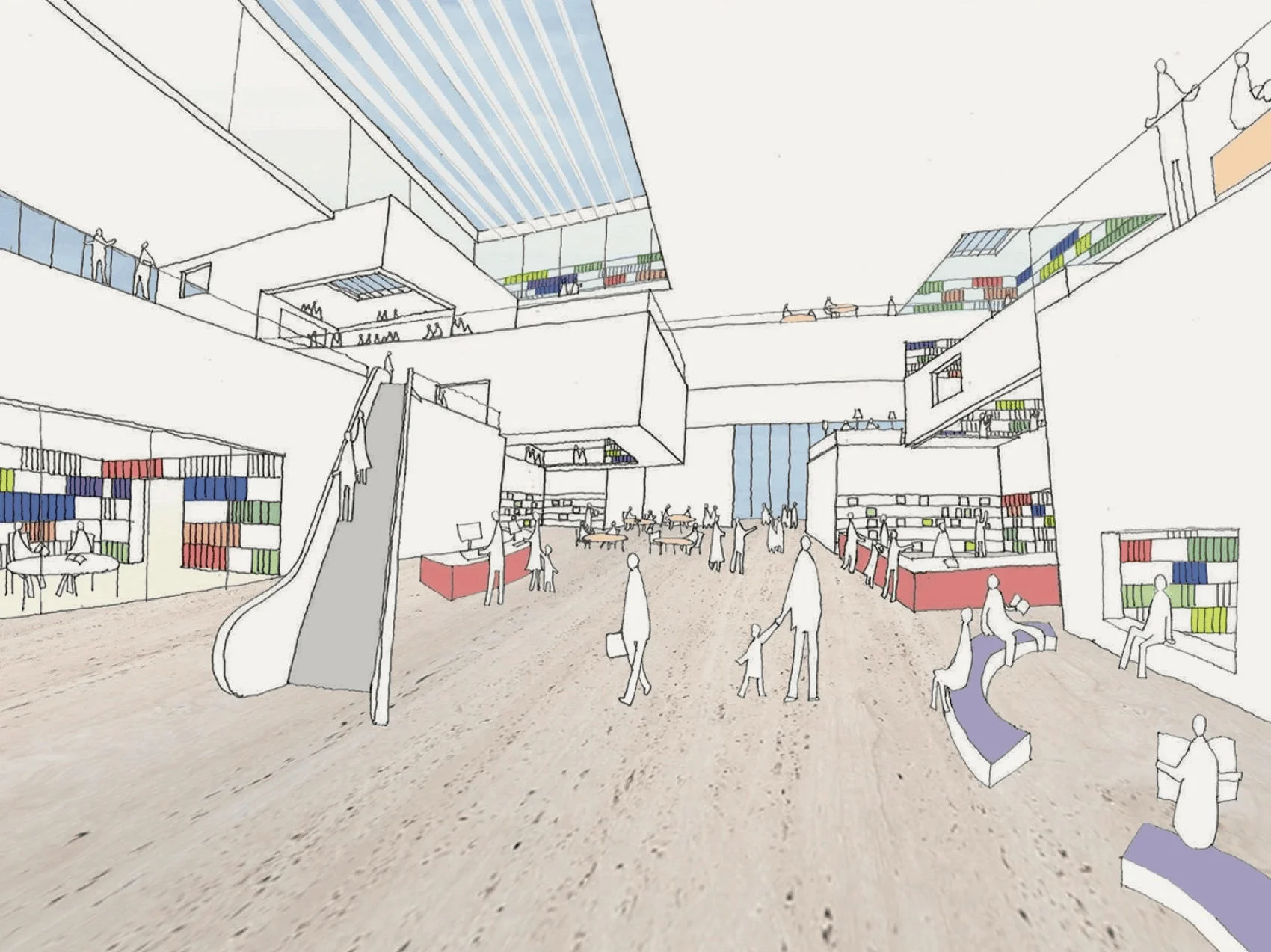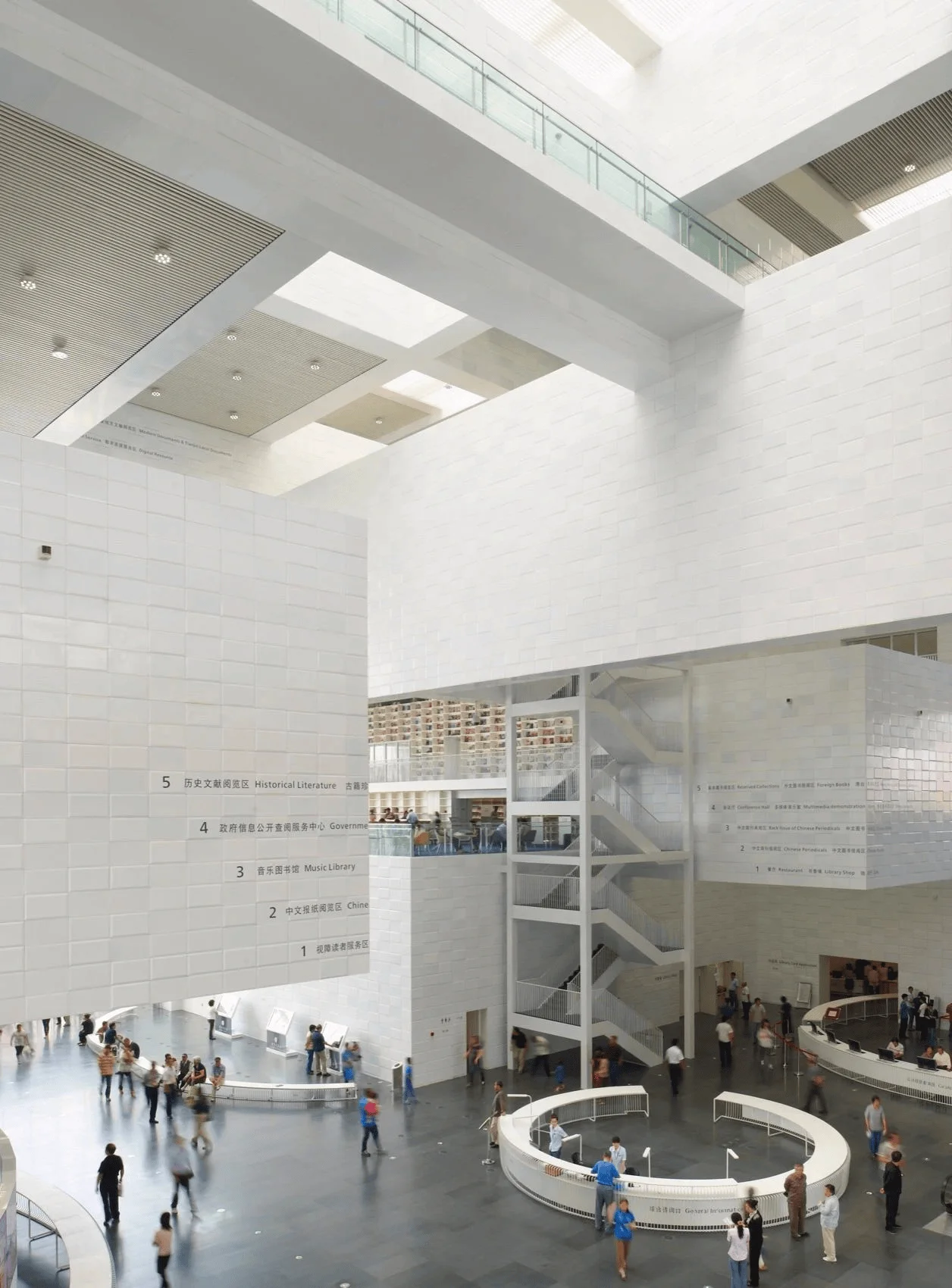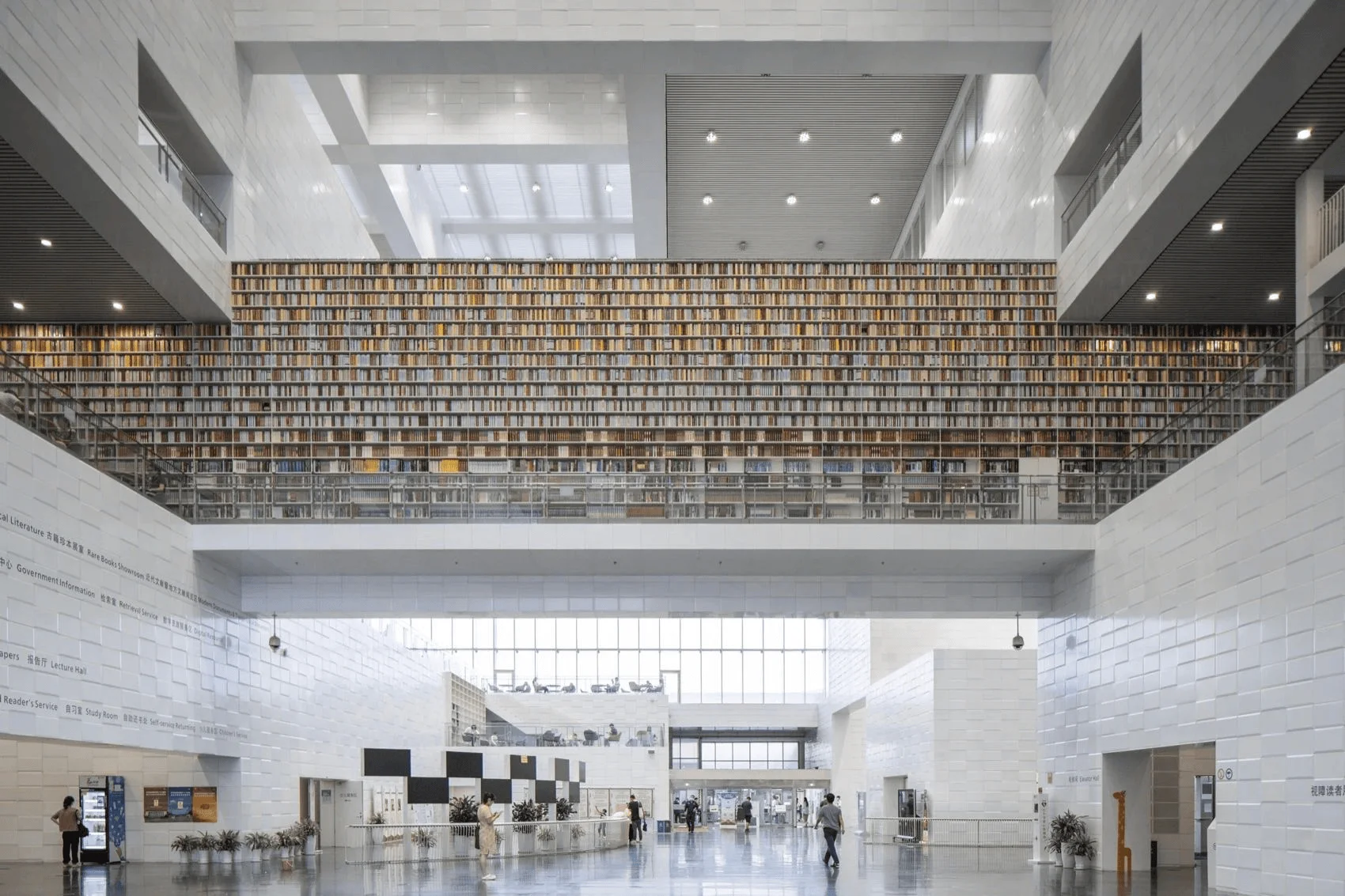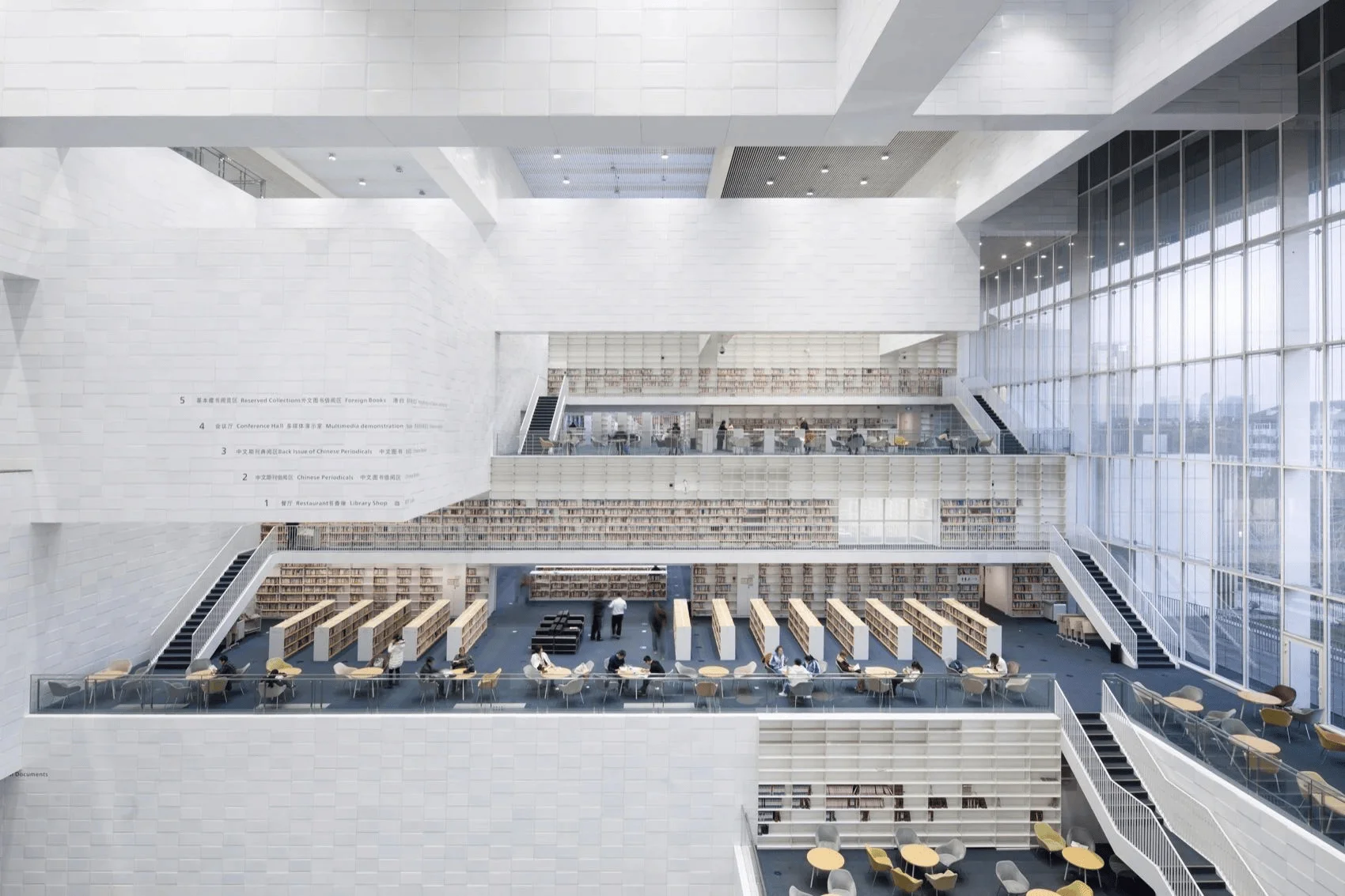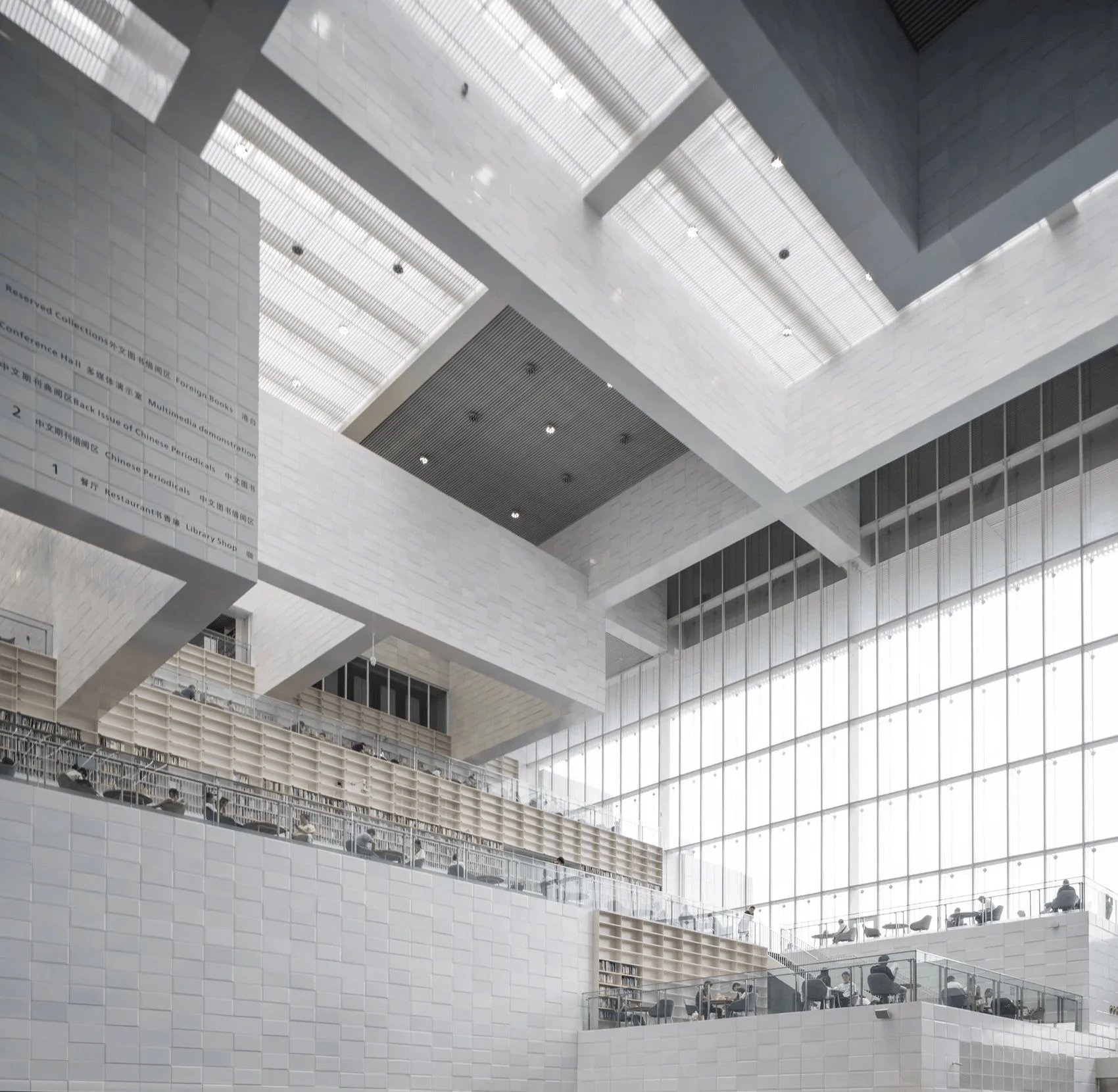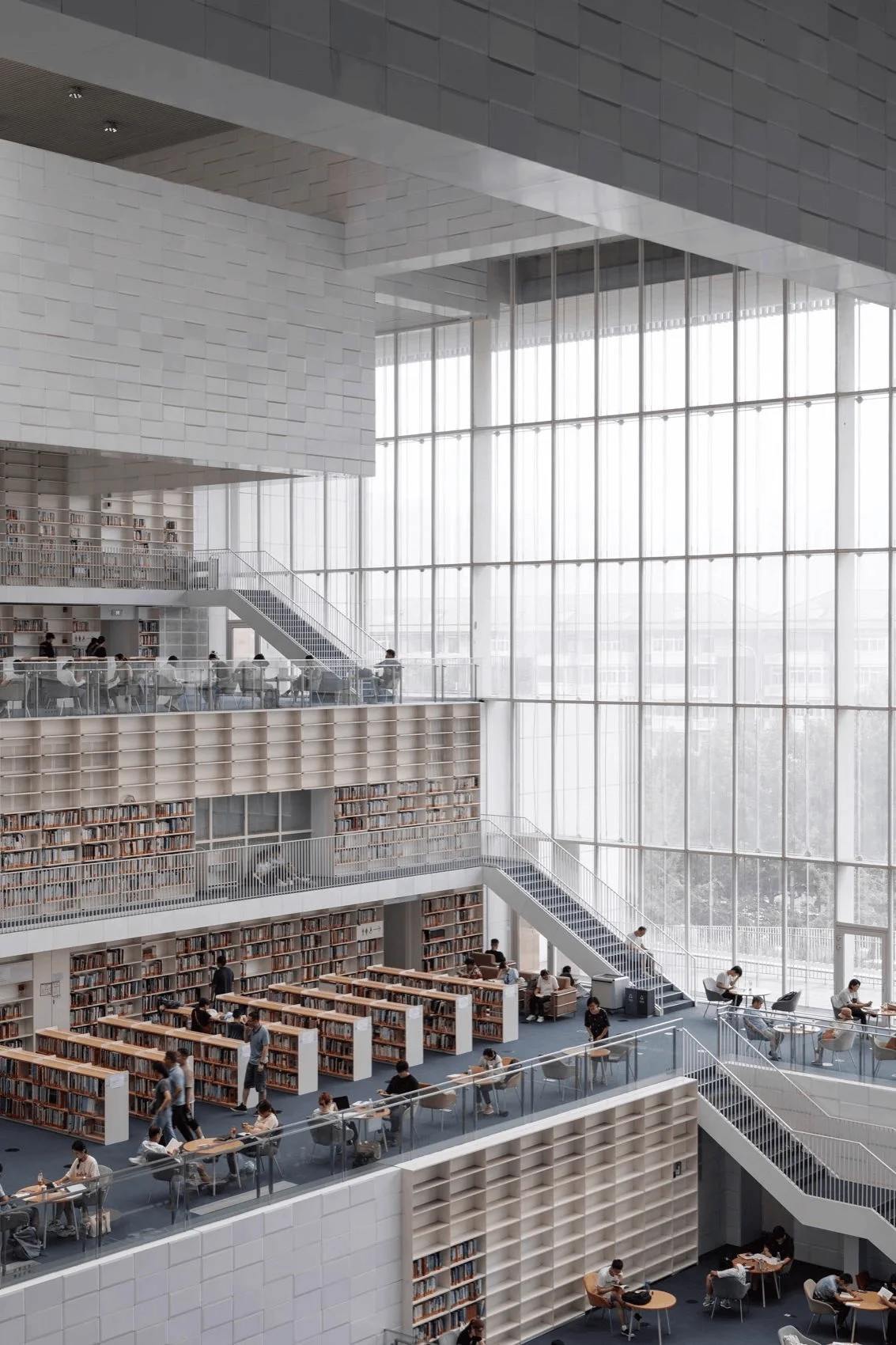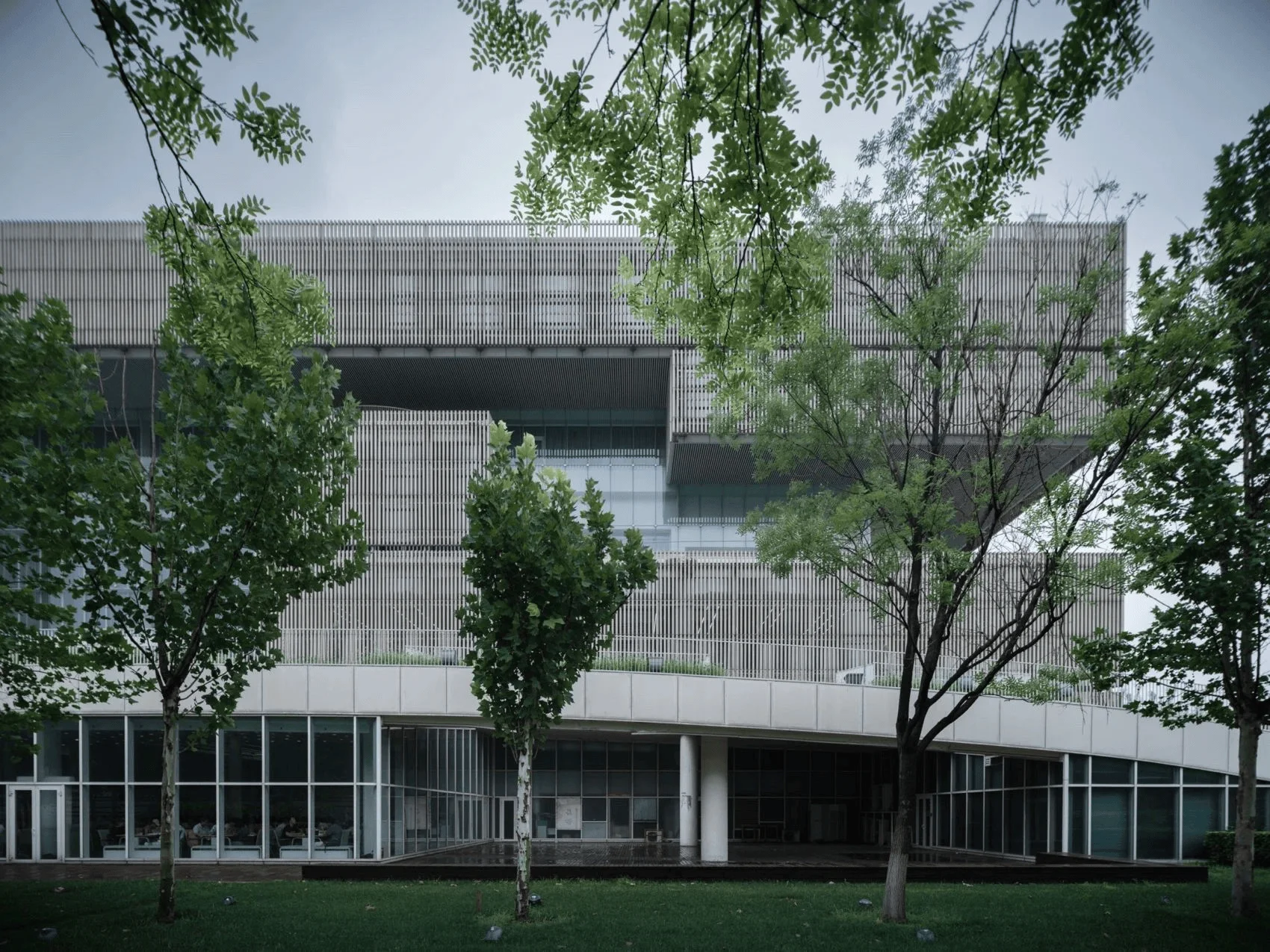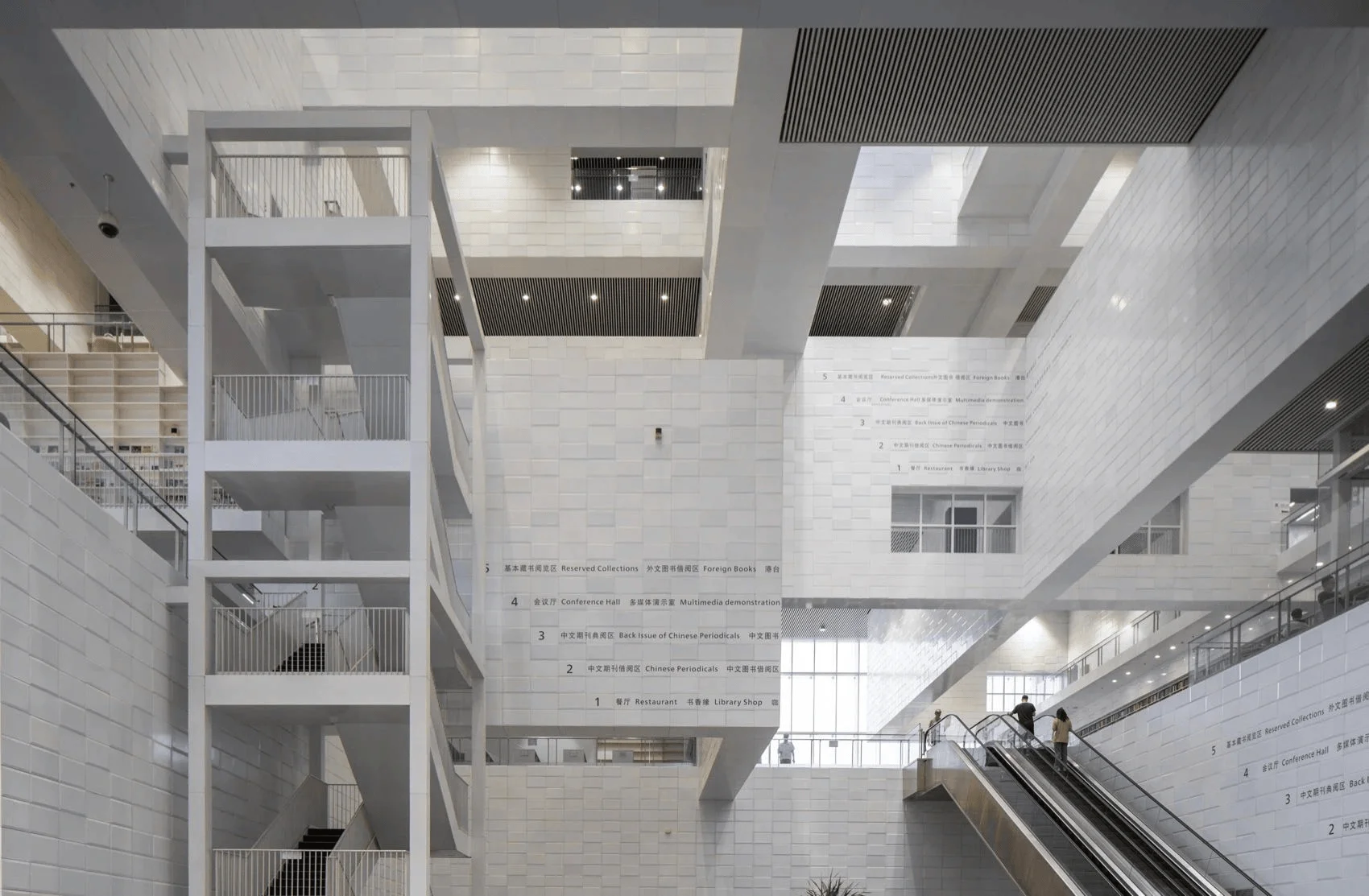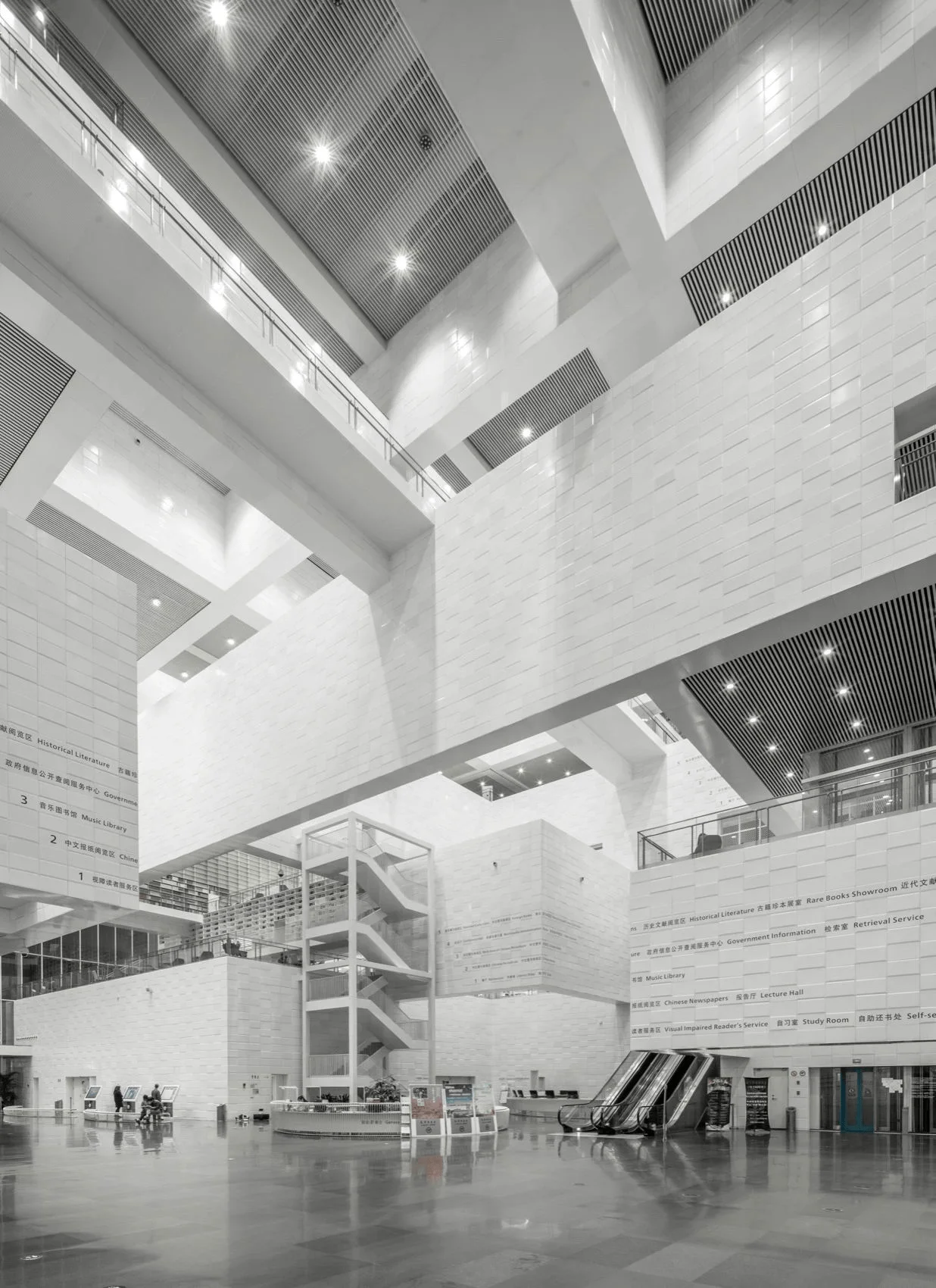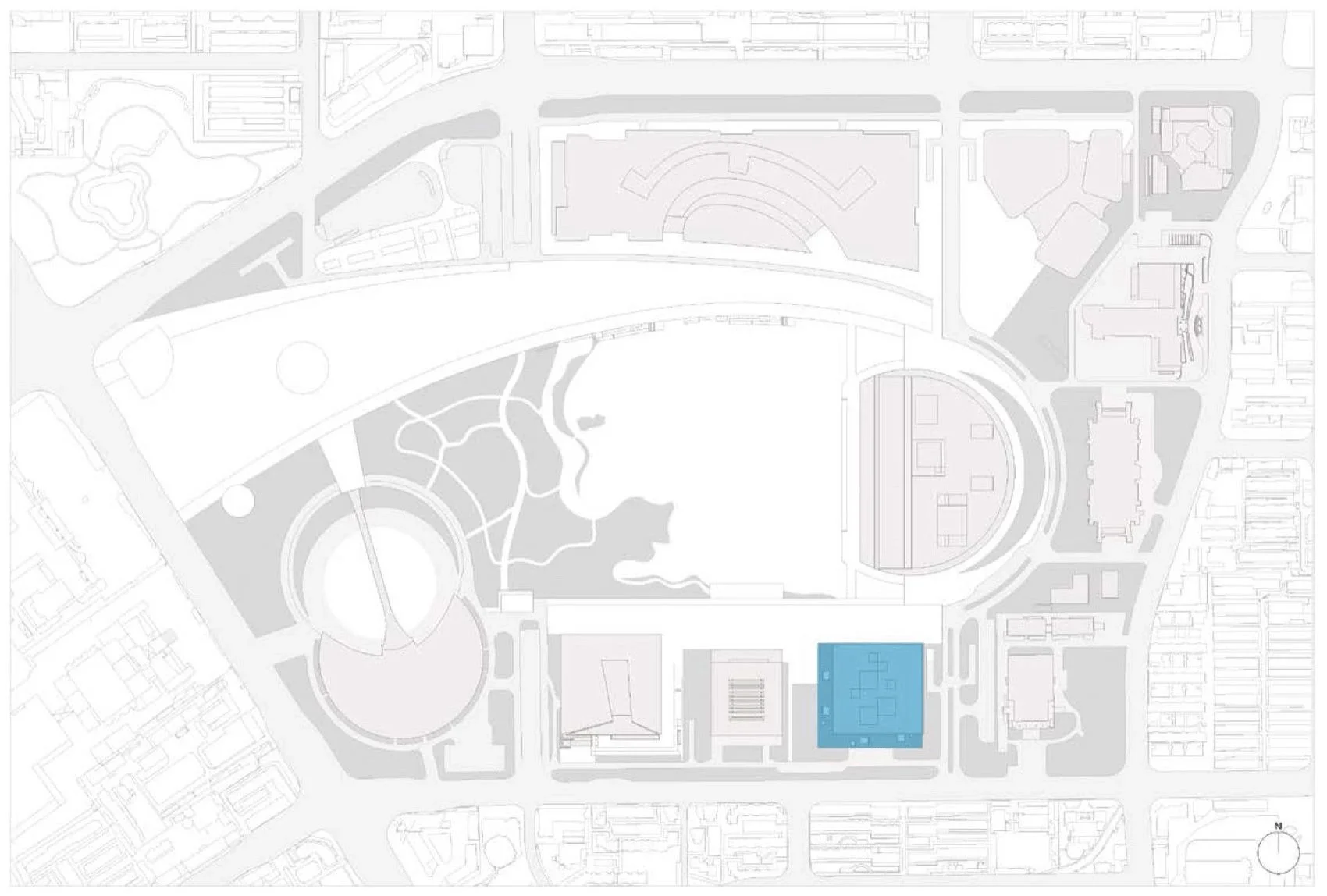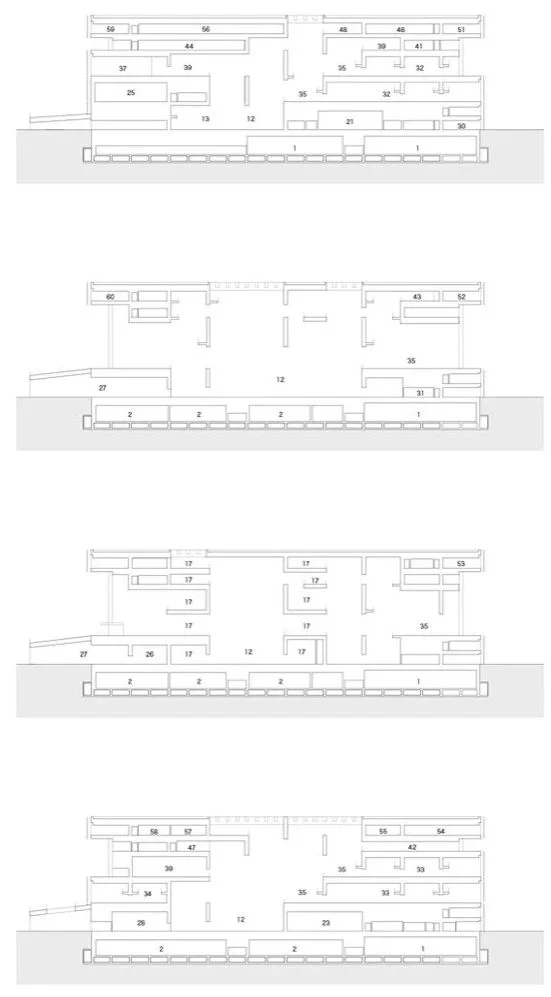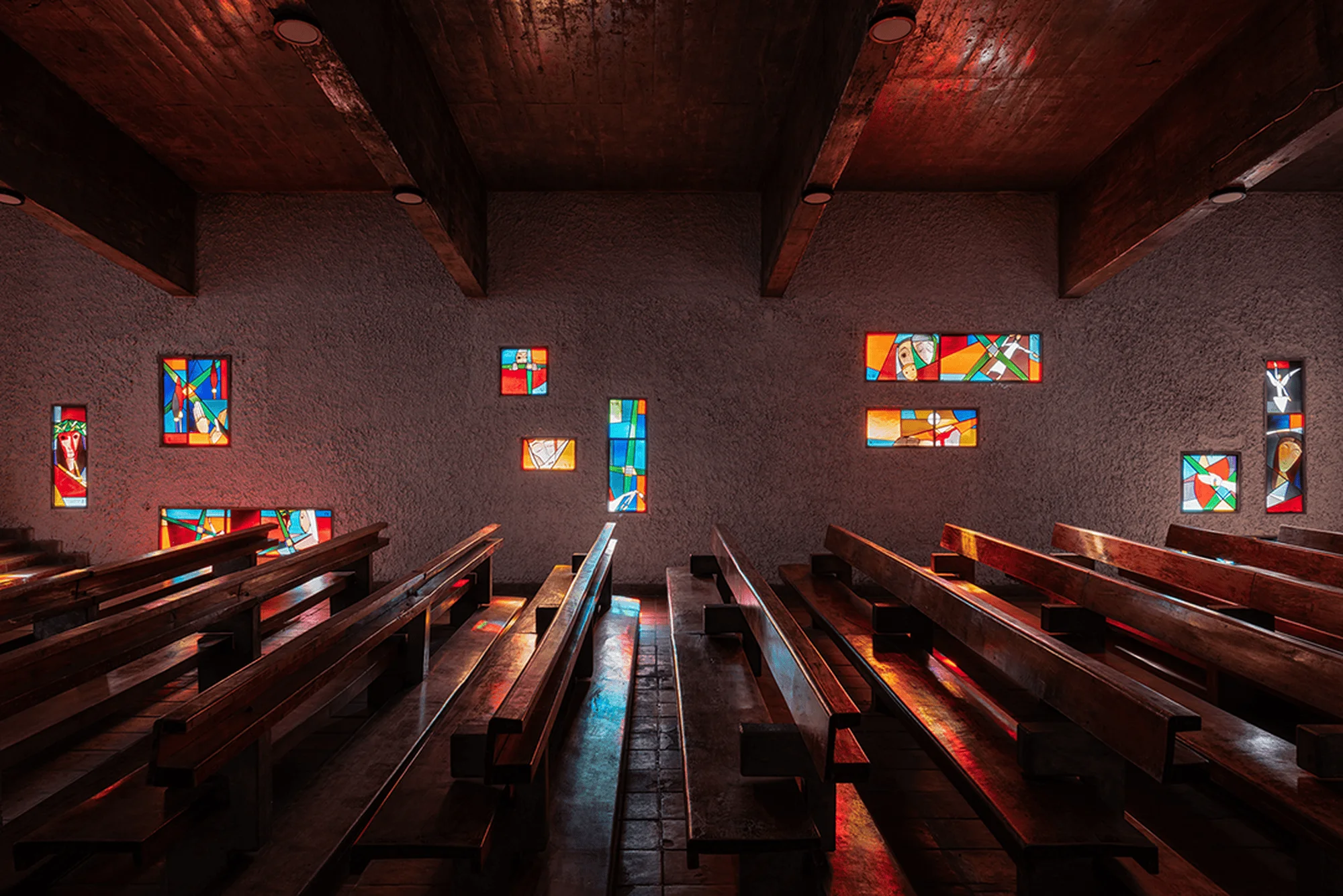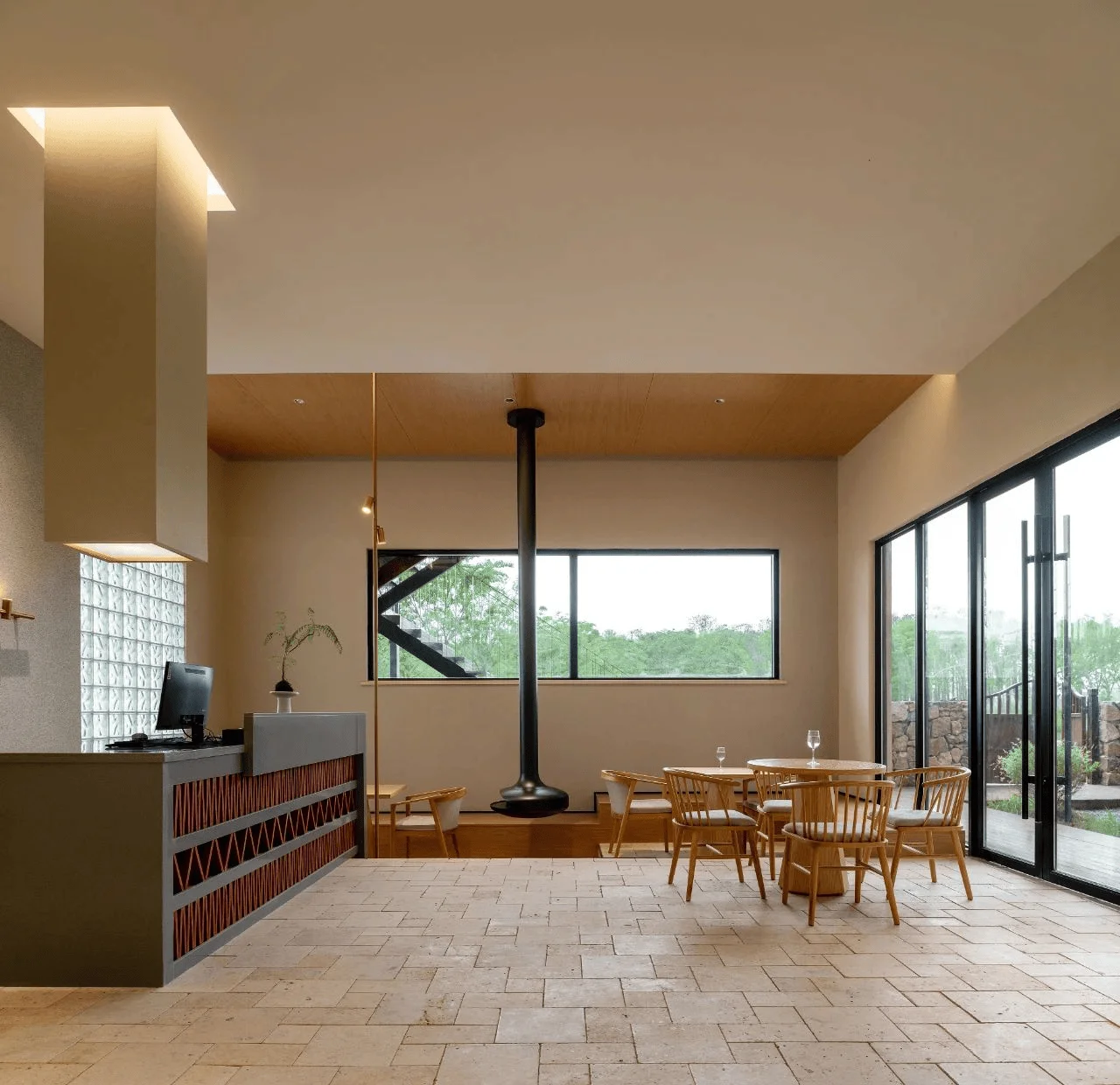Tianjin Library, designed by Ryue Nishizawa, integrates community interaction with knowledge exploration, blurring the boundary between public and private spaces.
Contents
Project Background and Design Concept
The Tianjin Library, Ryue Nishizawa’s sole public cultural building in China, is a testament to his belief that architecture should be seamlessly integrated with its surrounding community. Completed in 2012, the project aimed to create a space where learning and community interaction coexist. The library’s design goes beyond conventional library functionalities, aiming to be a knowledge playground where individuals can freely engage with information and each other, reflecting Nishizawa’s innovative ideas on the relationship between people, the public and private realms, architecture, and the community. public library design blending community and knowledge. The project exemplifies the harmonious integration of public and private spaces within a library environment.
Functional Layout and Spatial Planning
To encourage public engagement, the library’s design strategically organizes functions based on their degree of openness and public accessibility. Open and collaborative spaces are positioned on lower levels, while semi-enclosed and private study areas are located on the periphery or upper floors. This gradual shift from open to closed, public to private, encourages interaction and knowledge sharing. By integrating these functionalities, the library becomes an integral part of daily life, fostering a continuous cycle of knowledge acquisition and exchange. public library design blending community and knowledge. This intelligent planning creates a vibrant and inclusive learning environment.
Threshold Spaces and Enhanced Social Interaction
Nishizawa’s designs often blur the lines between public and private spaces through the creation of ‘threshold’ spaces. These spaces, exemplified by the library’s central ‘street’, are not solely owned by the institution but also belong to the wider community. The threshold space acts as a connective tissue between the city and the library, allowing natural flow and social interaction. It seamlessly connects the exterior to the interior spaces. Readers can pause and relax, move towards the lake, or explore the layered reading platforms. Similar design concepts are also applied to internal spaces, like the staggered reading areas. These ‘threshold’ spaces, whether internal or external, foster a sense of unity and encourage social interactions, enriching the library experience. public library design blending community and knowledge. Threshold spaces provide opportunities for unplanned, enjoyable encounters and encourage community involvement.
Exterior Design and Aesthetics
Transparency and the blurring of indoor and outdoor boundaries are hallmarks of Nishizawa’s work. The Tianjin Library utilizes a double-skin facade, featuring stone louvers and a glass curtain wall. This approach offers a sense of lightness and openness to a large building. During the day, light is diffused, offering a pleasant environment. At night, the building’s interior glow creates a comforting ambience that invites people from the city to be a part of this space. This design strategy fosters a sense of belonging and community, welcoming the city into the heart of the library. public library design blending community and knowledge. This approach effectively connects the architecture with the surrounding urban landscape.
Technical Details and Sustainability
The library’s design is based on a modular system, with the overall structure divided into 100 standardized 10.2 x 10.2-meter modules. However, Nishizawa avoids a repetitive or monotonous interior through the juxtaposition of enclosed rooms, floating walls, open platforms, and cantilevered beams. The design showcases a steel framework and an interconnected spatial truss system, a collaboration between Nishizawa’s firm and the Tianjin Urban Planning and Design Institute. It demonstrates how structural innovation can create unique and dynamic spaces. This collaboration exemplifies the ‘competitive cooperation’ model that Nishizawa embraces, where collaborative design goals foster creative synergy and technical advancements. public library design blending community and knowledge. The building’s sustainability efforts, incorporating landscaping, offer visitors a harmonious and natural experience.
Social and Cultural Impact
Since its completion, the Tianjin Library has gained recognition for its remarkable integration of structure and space, as well as its connection with the broader urban context. However, it is with Nishizawa’s receipt of the 2024 Pritzker Prize that his ‘social territorial circle theory’ and its emphasis on communal living gained greater attention. The Tianjin Library stands as a successful case study of this theory, showcasing how architecture can be successfully integrated with a community. The library’s design provides an excellent example of the implementation of this theory, contributing to a better understanding of its evolution and effectiveness. public library design blending community and knowledge. The library inspires a new approach to community-centric architecture.
Conclusion
Ryue Nishizawa’s achievement of the 2024 Pritzker Prize is significant beyond a mere cultural event. It represents encouragement and acknowledgment of his commitment to the ideals of modern architecture, his innovative approach that breaks the mold of rigid mechanical modernism, and the conviction that architecture possesses the power to positively transform society. The Tianjin Library, a project embodying Nishizawa’s design philosophy, stands as a testament to this principle and will continue to be a focal point for conversations about community-centric architectural design. public library design blending community and knowledge. His designs represent a new era in architecture, where communal spaces are celebrated and embraced.
Project Information:
Project Type: Cultural Building
Architect: Ryue Nishizawa Architect & Associates, Tianjin Urban Planning & Design Institute
Area: 3.67hm²
Gross Built Area: 64,000sqm
Year: 2012
Country: China
Photographer: Zhan Changheng, Liu Guowei




